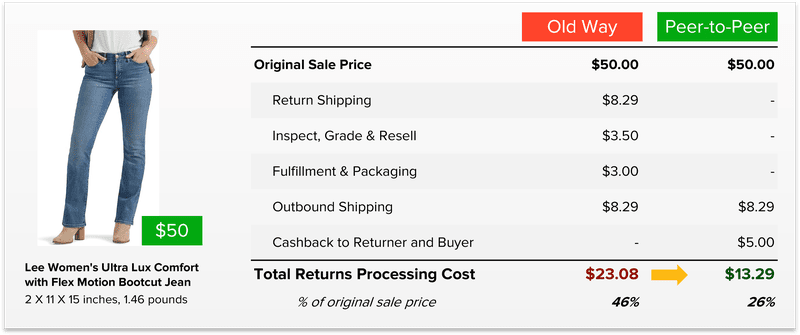Cloud Warehouse Management System: Benefits for Modern Warehousing

Last updated on April 02, 2025

A Warehouse Management System (WMS) is a specialized software designed to streamline and optimize warehouse operations. Think of them as the brain behind warehouse operations, making sure everything runs like a well-oiled machine. They help businesses handle everything from getting inventory in, storing it, tracking it, to shipping it out—all while keeping costs in check and productivity high. Whether you’re a small online retailer or a giant distribution center, a WMS is your go-to for managing inventory distribution, multi-warehouse orders, and even cutting down shipping costs.
Today’s warehouses are juggling a lot—tons of inventory, complex supply chains, and sky-high customer expectations. Without a WMS, things can get chaotic. You might struggle with order accuracy, stock tracking, and keeping up with those speedy delivery promises. But a modern WMS is like having a superpower. It automates processes (the best of which remove the human altogether and complete workflows autonomously), cuts down on manual labor, and boosts efficiency. Plus, cloud-based solutions save you money by ditching the need for hardware and IT upkeep, letting you focus on what really matters—boosting your ROI.
What is Cloud-Based WMS?
So, what’s a cloud-based WMS all about? It’s a software solution hosted on remote servers, accessible via the internet. Unlike the traditional systems that sit on your premises (i.e., computers in your warehouse), cloud-based WMS offers flexibility, scalability, and cost-efficiency. Say goodbye to hefty hardware investments and IT maintenance. With cloud tech, you can manage your warehouse operations from anywhere, keeping an eye on inventory, order fulfillment, and overall performance in real time. Today, this modern approach is a must for staying competitive.
Why a WMS is Essential
Ecommerce has flipped the shopping game, with more and more purchases happening online. Warehouses have had to keep up with the pace. Online shoppers want their orders processed and shipped fast. As order volumes rise, fulfillment centers need to be on their A-game to avoid disappointing customers, especially those demanding Amazon shoppers. That’s where a modern WMS comes in handy.
A well-implemented WMS ensures precise inventory management, so you’re always ready to ship without overselling or running out of stock. It speeds up order fulfillment by optimizing picking routes and uses new scan verification techniques to nail near-perfect performance metrics. Plus, it automates tasks like shipping label creation. By syncing with other systems, a WMS boosts visibility across the supply chain, helping businesses make smart, data-driven decisions. Integration with enterprise resource planning solutions improves data flow and inventory tracking, making order management a breeze. And let’s not forget how supply chain management benefits from cloud-based systems, enhancing flexibility, scalability, and security, allowing businesses to adapt to market demands and streamline operations.
Key Benefits of Using a WMS
Boosting Efficiency and Reducing Errors
Efficiency is the name of the game in warehouse management, and a WMS takes it to the next level. Warehouse management software streamlines and automates inventory fulfillment processes, enhancing cost control and efficiency. It helps businesses maximize storage space, suggest inventory placement, and reduce the time it takes to pick, pack, and ship orders. Effective inventory tracking ensures accurate and efficient management of stock levels and order fulfillment. Automating these tasks means fewer mistakes, lower costs, and faster fulfillment times, all of which contribute to happier customers and increased profitability.
Real-Time Inventory Management, Visibility, and Control
With a WMS, businesses can monitor stock levels in real time to ensure they always have accurate information about what’s available, what’s running low, and when to reorder. Real-time warehouse visibility is crucial for enhancing labor productivity and engagement, as it allows for better utilization of resources and more efficient operations. It tracks quantity on hand, quantity available, quantity committed to new orders, even purchase order quantity and expected delivery dates. The modern WMS uses agentic artificial intelligence, (not generative AI like ChatGPT and Claude…this is more powerful, and autonomous), to compare real-time sales trends to stock depletion rates and then uses supplier lead times and budget data to create purchase orders independently. This unprecedented level of visibility and automation prevents overstocking and stockouts, which can be very costly and risk losing future business from unhappy customers.
Optimized Labor Management
Managing a warehouse workforce can be challenging, especially during peak seasons when demand spikes. A WMS makes it easy to track employee productivity, assign tasks based on priority, and create efficient workflows. Some even gamify workflows and provide incentives and bonuses for achieving a set of goals. Features like mobile accessibility and intuitive user interfaces help train new employees faster, increase their productivity, and reduce human error.
Data-Driven Decision Making with Advanced Reporting
A modern WMS offers robust reporting and analytics tools that provide valuable insights into warehouse performance. Cloud WMS systems enhance these capabilities by offering advanced reporting and analytics tools, enabling businesses to gain deeper insights into their operations. Businesses can monitor order accuracy, fulfillment speed, inventory turnover, and workforce efficiency to identify areas for improvement and continuously optimize operations to boost the bottom line.
Near-Perfect Order Accuracy
Achieving near-perfect order accuracy is a critical performance indicator for any warehouse. Cloud-based WMS excels in this area by providing real-time visibility into inventory levels and automating key tasks such as order picking and packing. With advanced features like barcode scanning and automated verification processes, cloud-based WMS minimizes human errors and ensures that the right products are picked, packed, and shipped every time. This level of precision not only reduces costly mistakes but also enhances customer satisfaction by ensuring that orders are fulfilled accurately and promptly.
Challenges and Considerations
Implementation Can Be Complex
Switching to a WMS requires careful planning as it involves data migration, employee training, and system integration. The initial implementation phase may temporarily impact productivity, but the long-term benefits far outweigh the short-term disruptions.
Legacy System Integration Issues
Older warehouse systems may not be compatible with modern WMS software, requiring additional customization or middleware solutions. Businesses need to evaluate their existing infrastructure to ensure smooth integration and avoid costly delays.
Cost and ROI Considerations
While a cloud warehouse management system helps reduce upfront costs, businesses must still account for subscription fees, implementation expenses, and potential downtime during the transition. However, the return on investment (ROI) is usually substantial with cost savings achieved across labor and many cost and efficiency savings across order and inventory management and fulfillment workflows.
Internet Dependency for Cloud-Based Systems
Cloud-based WMS platforms rely on stable internet connectivity. While most providers offer offline features, consistent network access is essential for real-time data updates and smooth warehouse operations. But 99.98% of U.S. households have access to high-speed broadband internet, defined as a minimum of 100Mbps download speed and 20Mbps upload speed; 94% if satellite broadband is excluded.
Why Cloud-Based WMS is the Future of Warehouse Management
Scalability and Business Growth
The best cloud-based warehouse management systems with modern network architecture provide unparalleled scalability, allowing businesses to expand their operations without the need for hardware investments. This is particularly valuable for ecommerce companies experiencing seasonal fluctuations in demand.
Lower Costs and Increased Efficiency
Unlike traditional on-premise systems that require expensive hardware and IT maintenance, (including specialized staff), cloud-based warehouse management systems follow a subscription model, reducing costs while improving efficiency. Many offer discounts for annual pre-pay, (versus monthly), and many offer modular systems where small businesses can get access to the core features for a lower cost of entry , while larger and more complex operations can subscribe to additional features that may not be needed by smaller merchants. These factors make cloud-based WMS’s more accessible for businesses of all sizes.
Remote Access and Multi-Warehouse Coordination
With cloud-based systems, warehouse managers can keep tabs on operations from anywhere, making it a breeze to coordinate multiple fulfillment centers. This is a game-changer for businesses juggling global supply chains.
Automatic Software Updates and Security Enhancements
In today’s turbulent world, cybersecurity threats are evolving faster than ever. AI-driven threats are on the rise, with cybercriminals using machine learning to tweak malicious code in real-time. But don’t worry! With cloud-based WMS solutions, updates and security patches are automatically handled by the provider. This means you’re always equipped with the latest tech without lifting a finger.
Ecommerce and Retail Integration
Having your warehouse management system seamlessly connect with online retail platforms is as important as ever. Cloud-based WMS can effortlessly link up with ecommerce sites, automating the flow of orders from the online store to the warehouse. This ensures real-time inventory updates, so customers always know what’s in stock. Automated order fulfillment processes make picking, packing, and shipping a breeze, cutting down on delivery times. By optimizing shipping operations and reducing errors, cloud-based WMS helps businesses improve order fulfillment rates, lower shipping costs, and enhance overall customer satisfaction.
Integrated Automation
Cloud-based WMS can sync up with various automation systems like conveyor belts, robots, and automated storage and retrieval systems. This integration takes care of repetitive tasks, optimizes workflows, and boosts overall efficiency. By relying less on manual labor, integrated automation helps cut labor costs and minimize human errors. The result? A more streamlined operation that can handle higher order volumes with greater accuracy and speed, ultimately leading to happier customers and better warehouse performance.
AI-Driven Warehouse Management
The future of warehouse management is all about AI-driven capabilities, and cloud-based WMS is leading the charge. By incorporating machine learning and predictive analytics, these systems can optimize inventory management, predict demand, and automate a variety of tasks. These AI-driven features empower warehouses to make data-informed decisions, improve efficiency, and cut operational costs. For example, predictive analytics can forecast inventory needs based on past data and market trends, ensuring stock levels are always just right. This level of automation and intelligence not only boosts warehouse performance but also gives you a significant edge in the supply chain industry.
How SOC 2 Compliance Enhances WMS Security
When it comes to handling sensitive inventory and customer data, security is a big deal. That’s where SOC 2 (System and Organization Controls 2) compliance comes into play. It makes sure that WMS providers are on top of their game with strong security measures to keep your data safe and sound.
Why SOC 2 Matters for Warehouse Management
- Enhanced Data Protection – It means your data is locked up tight with encryption and access controls, keeping it out of the wrong hands.
- Reliable System Performance – You can count on consistent performance and uptime, so your warehouse keeps running smoothly without any hiccups.
- Regulatory Compliance and Risk Management – Staying in line with industry standards (like PCI compliance) is imperative, and SOC 2 helps you dodge those nasty security breaches.
- Building Trust with Customers and Partners – Showing that you take data security seriously goes a long way in building trust and credibility with everyone involved.
The Future of Warehouse Management
With all the buzz around automation, artificial intelligence, and cloud-based technology, warehouse management is definitely evolving. A cloud-based system is a game-changer, offering the flexibility and scalability that supply chain management needs to keep up with market demands. Businesses that jump on these innovations will have the upper hand by boosting efficiency, cutting costs, and keeping customers happy. These days, having a solid cloud-based WMS isn’t just a nice-to-have; it’s a must for any business aiming not just to survive, but to thrive in ecommerce.
Frequently Asked Questions
What is a Warehouse Management System (WMS), and why is it important?
A Warehouse Management System (WMS) is specialized software designed to optimize and streamline warehouse operations. It helps businesses manage inventory, track stock levels, improve order accuracy, and automate workflows, reducing manual labor and operational costs. Whether for a small retailer or a large distribution center, a WMS ensures efficiency, accuracy, and faster fulfillment, keeping customers satisfied and businesses competitive.
What are the key benefits of using a cloud-based WMS?
A cloud-based WMS offers flexibility, scalability, and cost savings by eliminating the need for on-premise hardware and IT maintenance. It provides real-time inventory tracking, automates workflows, and enhances security with automatic updates. Businesses can access their warehouse operations from anywhere, making it easier to manage multiple locations and adapt to changing market demands.
How does a WMS improve order accuracy and fulfillment speed?
A modern WMS optimizes picking routes, uses barcode scanning and automated verification, and integrates with shipping carriers to ensure precise order processing. By reducing human errors and increasing efficiency, businesses can achieve near-perfect order accuracy and faster fulfillment, which leads to reduced costs and higher customer satisfaction.
What challenges should businesses consider when implementing a WMS?
Implementing a WMS requires careful planning, as businesses may face challenges such as data migration, employee training, and integrating with legacy systems. While cloud-based solutions reduce upfront costs, businesses should account for subscription fees and potential downtime during the transition. However, the long-term benefits in efficiency and cost savings typically outweigh these initial hurdles.
How does AI-driven warehouse management enhance operations?
AI-powered WMS solutions use predictive analytics to optimize inventory levels, forecast demand, and automate decision-making. These systems can generate purchase orders based on real-time sales trends and supplier lead times, reducing stockouts and overstocking. By leveraging AI, businesses can improve operational efficiency, lower costs, and gain a competitive edge in the evolving supply chain landscape.

Up to 64% Lower Returns Processing Cost


 12 minutes
12 minutes